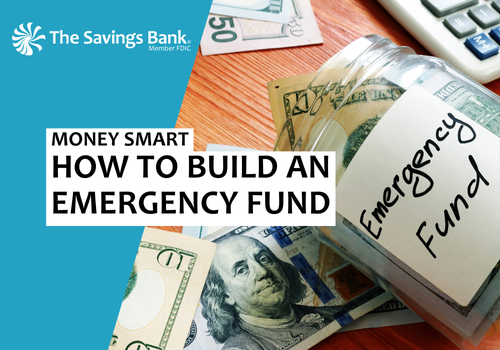How To Build an Emergency Fund
09/18/2024

How To Build an Emergency Fund
Learning the difference between everyday funds, savings, and an emergency fund is an essential part of successfully managing your money. Most importantly, learning the difference can convey just how important it is to build an emergency fund. If you are already struggling financially or do not know where to start, let’s go over some key points to help you on your way to a successful emergency fund.
First, let’s learn the difference between everyday funds, savings, and emergency funds.
Everyday funds are for things like bills, loan payments, and groceries. Any expense you incur in your everyday life should be taken from your everyday funds, usually held in your checking account.
Savings are meant to help you reach your financial goals. This may be for a vacation, new car, or house. These are usually held in savings accounts that often earn interest.
Emergency funds, on the other hand, are for unplanned expenses. These are often medical or personal emergencies like medical bills, home repairs, or loss of income. People may choose to keep these funds in a traditional bank account, on a prepaid card, or in cash. The amount will vary depending on each person’s potential loss amount.
Some may question how they could possibly build an emergency fund and savings while at the same time keeping up with regular expenses, but the important thing to remember is that no amount is too small. Here are some strategies for building an emergency fund:
Create a Plan. First, calculate a reasonable goal amount based off any insurance deductibles or a couple of months pay. Then create a plan for how much you need to put aside each day, week, or month to help you get to your goal emergency fund amount. Decide whether this amount will come out of your account automatically or if you will manually put the money into your fund.
Take Advantage of One-Time Bonus Payouts. Many Americans receive a tax return, birthday money, or other one-time bonus payouts. Consider setting this money aside for your emergency fund. This can help you get to your goal much faster and may free up other funds for allocation into your daily expenses or savings.
Keep Track of Progress. It is important to do periodic check-ins to your emergency fund to make sure things are progressing as necessary. This may also allow you to increase or decrease your contributions depending on how fast you are meeting your goals.
Emergency funds are essential to getting back on your feet after an unplanned or emergency financial situation. Not only do they provide you with a sense of security and safety, but they can also help you avoid taking on debt that may be even more difficult to pay off. If you do end up having to spend your emergency fund, it is important that you build it back up again each time.
It is hard enough dealing with life’s ups and downs - you do not need to add financial stress to the mix. Avoid undue stress by slowly building an emergency fund before you need it.
Sources:
https://www.consumerfinance.gov/an-essential-guide-to-building-an-emergency-fund/

